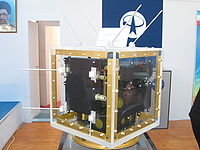
Photo from wikipedia
To conduct a bibliometric analysis, several researchers retrieve publications from Scopus or/and Web of Science (WOS) databases. When these scholars consider both Scopus and WOS databases, they mostly make two… Click to show full abstract
To conduct a bibliometric analysis, several researchers retrieve publications from Scopus or/and Web of Science (WOS) databases. When these scholars consider both Scopus and WOS databases, they mostly make two bibliometric analysis: one from Scopus database and the other from WOS database. A few researchers merge the two databases to conduct a single analysis, but they do not specify how they did it. This paper aims to advance the bibliometric analysis by addressing two points. First, this research claims that making a bibliometric analysis that takes information from Scopus or/and separately from WOS cannot give a broader view of knowledge and tendencies in a field. To prove this claim, we retrieve papers from Scopus and WOS databases to make a bibliometric analysis of sales force literature that covers from 1912 to 2019. Results show that there are many disparities between WOS and merged database, and between this latter and WOS database regarding bibliometric analyses, especially among primary productive authors, the most influential papers, and keyword occurrences. Second, this research proposes a four-step procedure that merges these two databases to allow more reliable bibliometric analyses. This procedure was explicitly shown by using the bibliometric analysis of sales force literature during 1912–2019.
Journal Title: Journal of Marketing Analytics
Year Published: 2020
Link to full text (if available)
Share on Social Media: Sign Up to like & get
recommendations!